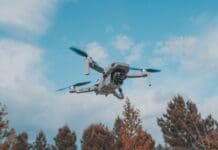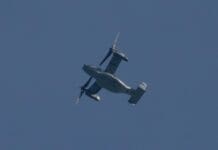This post is also available in:
 עברית (Hebrew)
עברית (Hebrew)
The US Marines face various challenges when confronting aerial threats. Currently, low altitude air defense (LAAD) Marines have to pair up and use binoculars to spot incoming threats and then launch a shoulder-fired Stinger missile to knock them out. However, a new detection and strike system that will be fielded before the end of 2020 would enhance the Marine Corps’ capabilities in counter-drone operations.
The Corps budget request includes increments of the Ground Based Air Defense (GBAD) system installed on at least 28 JLTVs and a total of 13 Ground/Air Task-Oriented Radar systems.
The GBAD system is a combined detection and strike system used by fire units in low altitude air defense (LAAD) battalions, which support the Marine Air Ground Task Force. With this system, Marines can detect and launch the missiles from a variety of vehicles, from a Mine Resistant Ambush Protected All-Terrain Vehicle or M-ATV or smaller units can divide the equipment between two small off road vehicles like the MRZR for an even lighter footprint, according to marinecorpstimes.com.
The first counter-drone iteration coming in 2020 will soon be followed by an increment in 2021 that will extend GBAD ranges and incorporate both kinetic (think missiles) and non-kinetic (think jammers and lasers).
Although the GBAD can operate standalone, the Corps hopes to tie into the G/ATOR, an advanced radar system that replaces five systems that do everything from air defense to air traffic control to target acquisition and tracking.
Radars being replaced include the TPS-63 air defense; TPS-73 air traffic control; MPQ-62 short-range air defense; TPQ-46 counterfire target acquisition and UPS-3 target tracking radar systems.
That gives the Marine Expeditionary Unit better capability in one system than in a batch of slapped together systems that predate the G/ATOR.

























